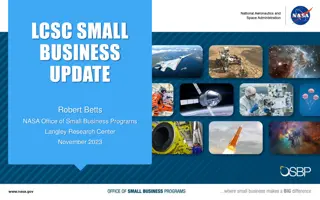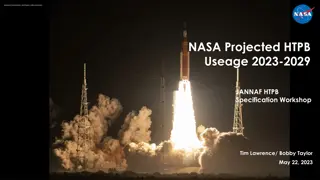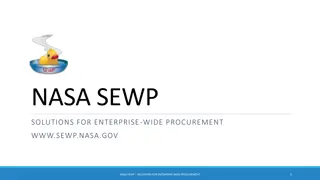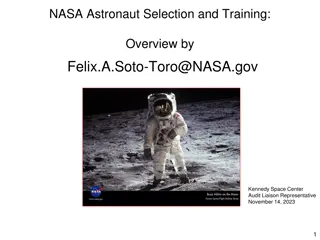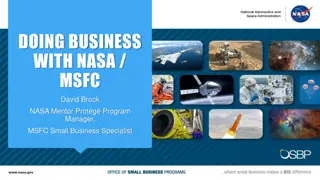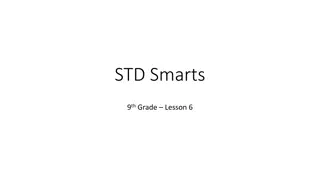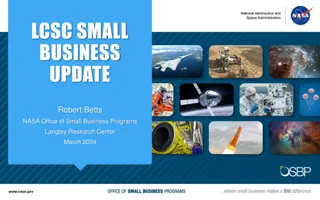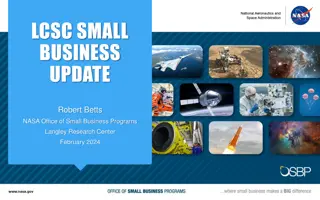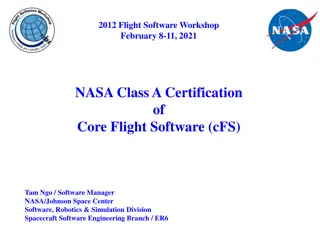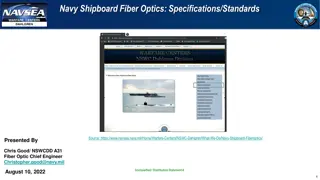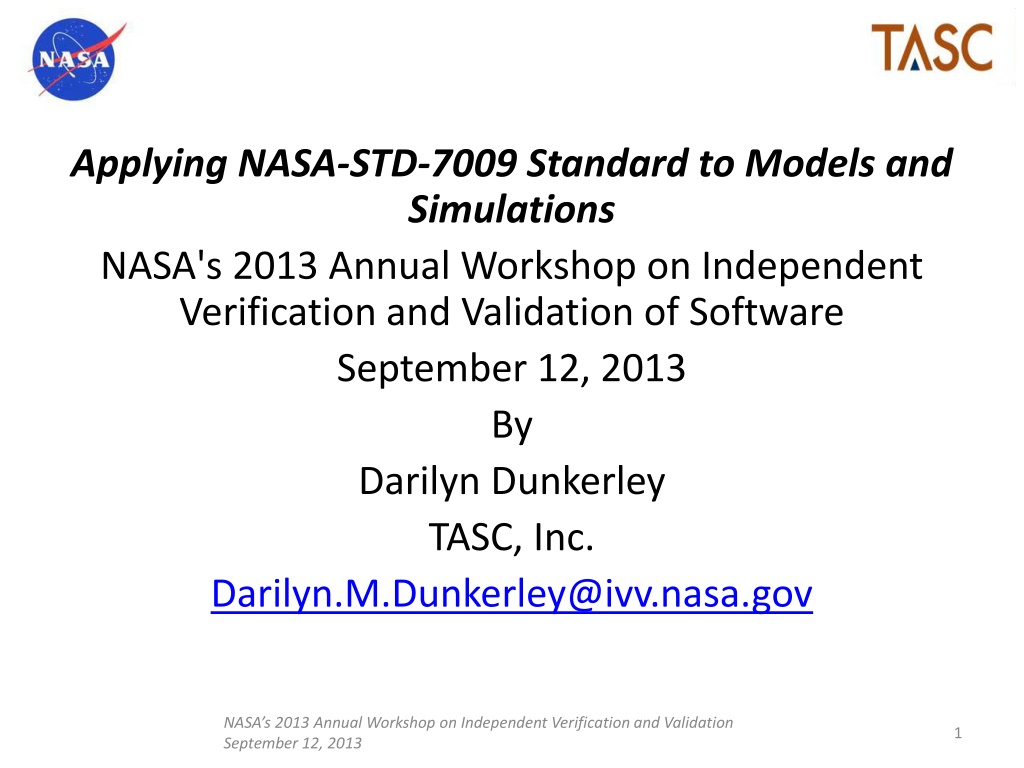
Understanding NASA-STD-7009 for Models and Simulations Workshop
Delve into the significance of NASA-STD-7009 standard for models and simulations as discussed at NASA's 2013 annual workshop. Explore its history, objectives, application, and industry adoption, emphasizing the critical role it plays in ensuring accuracy and reliability in critical decision-making processes.
Download Presentation

Please find below an Image/Link to download the presentation.
The content on the website is provided AS IS for your information and personal use only. It may not be sold, licensed, or shared on other websites without obtaining consent from the author. Download presentation by click this link. If you encounter any issues during the download, it is possible that the publisher has removed the file from their server.
E N D
Presentation Transcript
Applying NASA-STD-7009 Standard to Models and Simulations NASA's 2013 Annual Workshop on Independent Verification and Validation of Software September 12, 2013 By Darilyn Dunkerley TASC, Inc. Darilyn.M.Dunkerley@ivv.nasa.gov NASA s 2013 Annual Workshop on Independent Verification and Validation September 12, 2013 1
Talk Objective The History of NASA-STD-7009 NASA-STD-7009 Objectives Who Has Used NASA-STD-7009? What s the Big Deal About Models & Simulations (M&S)? Structure Vs. Dynamic M&S Development Balance M&S Standard Application at NASA IV&V Reflections on Developing NASA-STD-7009 Compliant M&S Products Questions? NASA s 2013 Annual Workshop on Independent Verification and Validation September 12, 2013 2
The History of NASA-STD-7009 Columbia Accident Investigation Board (CAIB) Report NASA-STD-7009 Standard for Models and Simulations Action 4 from the CAIB Report states: Develop a standard for the development, documentation, and operation of models and simulations Diaz Team Report - NASA NASA-STD-7009, Section 1.2 states: This standard applies to M&S used by NASA and its contractors for critical decisions in design, development, manufacturing, ground operations, and flight operations. Diaz Team # R13, CAIB # R3.8-2 states: All programs should produce, maintain, and validate models to assess the state of their systems and components. NASA s 2013 Annual Workshop on Independent Verification and Validation September 12, 2013 3
NASA-STD-7009 Objectives This standard was developed in response to Action 4 from the 2004 report A Renewed Commitment to Excellence, which stated the following: Develop a standard for the development, documentation, and operation of models and simulations: a. Identify best practices to ensure that knowledge of operations is captured in the user interfaces (e.g., users are not able to enter parameters that are out of bounds), b. Develop process for tool verification and validation, certification, reverification, revalidation, and recertification based on operational data and trending, c. Develop standard for documentation, configuration management, and quality assurance, d. Identify any training or certification requirements to ensure proper operational capabilities, e. Provide a plan for tool management, maintenance, and obsolescence consistent with modeling/simulation environments and the aging or changing of the modeled platform or system, f. Develop a process for user feedback when results appear unrealistic or defy explanation. * This material was extracted from the NASA-STD-7009 document (Section 1.1) and reformatted for readability NASA s 2013 Annual Workshop on Independent Verification and Validation September 12, 2013 4
Who Has Used NASA-STD-7009? As models and simulations are used more prevalently, the need to manage them accurately is critical. This standard has been adapted in several industries: NASA: Currently Multi-Purpose Crew Vehicle (MPCV) is using this standard DOD: MIL-STD-3022 CHG-1 Department of Defense Standard Practice Documentation of Verification, Validation, and Accreditation (VV&A) for Models and Simulations (April 2012) FDA/NIH/NSF: 5th Computer Models and Validation for Medical Devices (June 11-12, 2013) Adapting NASA STD 7009 to Assess the Credibility of Biomedical Models and Simulations , Lealem Mulugeta, Project Scientist, NASA Digital Astronaut Project NSAS Space Radiation Risk Project Review, National Academy of Sciences, Houston, Texas January 12, 2012 NASA STD 7009 NASA s 2013 Annual Workshop on Independent Verification and Validation September 12, 2013 5
Whats the Big Deal About M&S? Models and Simulations (M&S) are used on NASA missions (and other industries) to exercise software without requiring the hardware components to be included early in the mission lifecycle. For example, M&S can send commands to the FSW to fire thrusters without the thrusters being fired (That would not be safe!!) M&S allows various scenarios to be run without having the full system available. Intended to help facilitate the system development process Most importantly M&S products provide valuable feedback to decision-makers on design/architecture elements of the system early on For example, possibly a simulation of the FSW interacting with a 1553 Bus Simulation, versus Space Wire Simulation. A system designer selects one design over another often based on simulation results. NASA s 2013 Annual Workshop on Independent Verification and Validation September 12, 2013 6
Structure Vs. Dynamic M&S Development Balance Dynamic Nature of M&S Products Pros: Facilitates system development and design decisions Allows for more rapid software development Cons: Configuration a challenge to manage Documentation of assumptions and components are not always kept current The Balancing Act Between Structure and Dynamic Development Continues . NASA s 2013 Annual Workshop on Independent Verification and Validation September 12, 2013 7
M&S Standard Application at NASA IV&V To date, two evaluations have been done: Analysis and Management Framework Model (AMF) Criticality Assessment (done as part of a NEAP intern effort the summer of 2013) James Webb Space Telescope (JWST) participated in performing an abbreviated evaluation effort recently. NASA s 2013 Annual Workshop on Independent Verification and Validation September 12, 2013 8
NASA IV&V AMF Project 7009 Criticality Assessment AMF project has been developing a model to manage analysis data products at NASA IV&V NASA-STD-7009 was imported into the AMF Model Each 7009 requirement was atomically referenced and traced based on relevancy to the AMF model; Each trace was evaluated within the model and assessment comment was stored with each trace. NASA s 2013 Annual Workshop on Independent Verification and Validation September 12, 2013 9
7009 Criticality Assessment (Cont.) AMF Model Element AMF Model Element AMF Model Element AMF Model Element 7009 Requirement 7009 Requirement 7009 Requirement 7009 Requirement Assessment of AMF Model Element given a particular 7009 Requirement Analysis took place during the summer of 2013 with the participation of the AMF IV&V team with the effort of Robert Hewitt, NEAP Summer Intern The results of the assessment were stored within the AMF model (per each trace) Assessment of the trace included as part of the trace Assessment report to be generated from AMF NASA s 2013 Annual Workshop on Independent Verification and Validation September 12, 2013 10
7009 Criticality Assessment Conclusion 7009 Criticality Assessment Results The AMF project performed disciplined development practices from the beginning. Model assumptions, uses, and constraints were able to be found relatively easy The AMF project is 7009 compliant based on their phase of development Future efforts include: Assessment report formulation Training on the AMF usage NASA s 2013 Annual Workshop on Independent Verification and Validation September 12, 2013 11
JWST 7009 Criticality Assessment A more abbreviated approach was taken with the JWST project A set of questions (20 to be exact) were sent to the project for feedback As with the standard the types of questions that were asked included the following: Do you document the model/database usage? Are the components well-documented? Is the configuration management for the model (and its components) well-established? Is there a well-defined input/output data set defined? NASA s 2013 Annual Workshop on Independent Verification and Validation September 12, 2013 12
JWST 7009 Criticality Assessment Conclusion The IV&V project provided sufficient information in response to the questions. They indicated the following: Although late in the development lifecycle for this product, the IV&V team was able to retrieve most of the data items that are required by a 7009 Compliant project. This review was informal intended to familiarize the team with the 7009 standard NASA s 2013 Annual Workshop on Independent Verification and Validation September 12, 2013 13
Reflections on Developing NASA-STD-7009 Compliant M&S Products The earlier in the development lifecycle of an M&S product the more detailed/usable the information available for 7009 Criticality Assessment. Information required to be retained by a 7009 Compliant M&S product, is consistent with System Engineering Best Practices. NASA s 2013 Annual Workshop on Independent Verification and Validation September 12, 2013 14
Questions? NASA s 2013 Annual Workshop on Independent Verification and Validation September 12, 2013 15
BACKUP Slides NASA s 2013 Annual Workshop on Independent Verification and Validation September 12, 2013 16
Actual AMF 7009 Criticality Assessment Traceability NASA s 2013 Annual Workshop on Independent Verification and Validation September 12, 2013 17
Study Done to Correlate Existing Software Engineering Principles with M&S Standard http://swehb.nasa.gov/display/7150/7.15+-+Relationship+Between+NPR+7150.2+and+NASA-STD-7009#_tabs-2
Major Areas of Focus in M&S Standard 4.1 Programmatics 4.2 Models 4.3 Simulations and Analyses 4.4 Verification, Validation, and Uncertainty Quantification 4.5 Identification and Use of Recommended Practices 4.6 Training 4.7 Assessing the Credibility of M&S Results 4.8 Reporting Results to Decision Makers
Section 4.1: Programmatics This information is how a M&S product will be viewed and used by management How will model be used by Management to make decisions? Is all information related to usage and recommendations (as a result of M&S)
Section 4.2 Models More technical elaboration of contents and usage of the model Version control of the model established. Input and output datasets
Section 4.3: Simulations and Analyses M&S expected results documented. How does an analyst know the model/simulation worked? Elaboration of its intended use. Elaboration of the pedigree of the model. Computation requirements are vetted. How results are provided to decision makers.
Section 4.4: Verification, Validation, and Uncertainty Quantification M&S V&V process is produced Results are analyzed to determine veracity of the M&S design/content Identification and Use of Recommended Practices
Section 4.6: Training How the result will be presented to the user community. CM requirements How to recognize success/failure in the M&S results. How the results may impact existing procedures/policies.
Section 4.7: Assessing the Credibility of M&S Results NASA-STD-7009 has a fairly rigorous set of criteria applied by way of scoring the M&S product s credibility. Appendices B.2/B.3 will be evaluated for each M&S product
Section 4.8: Report Results to Decision Makers Results are reported to decision makers which include the following information: Acceptance criteria are elaborated. Unachieved acceptance criteria Violations of any assumptions for any model Violations of limits of operation Execution warnings/error messages Unfavorable outcomes Waivers to any of the requirements in this standard Uncertainties are estimated and reported Credibility of the M&S results which may include sub- factor weights (determined in 4.7)
References of Note Guidance for Space Program Modeling and Simulation , SAAB, AEROSPACE REPORT NO.TOR-2010(8591)-17, June 30, 2010 (slide 5) NASA-STD-7009 NSAS Space Radiation Risk Project Review National Academy of Sciences, Houston, Texas January 12, 2012 (slide 5) Relationship between NASA System Engineering Handbook (NASA- HDBK-7150.2) and NASA-STD-7009 (performed by SSO) http://swehb.nasa.gov/display/7150/7.15+- +Relationship+Between+NPR+7150.2+and+NASA-STD-7009#_tabs-2 (backup slide) NASA/SP-2010-576, Version 1.0, April 2010, NASA Risk-Informed Decision Making Handbook (Office of Safety and Mission Assurance, NASA Headquarters) www.hq.nasa.gov/office/codeq/doctree/NASA_SP2010576.pdf NASA Standard 7009 Training (created by NASA) http://standards.nasa.gov/training/NASA-STD-7009/index.html

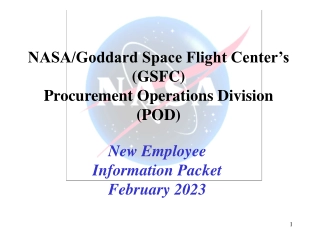
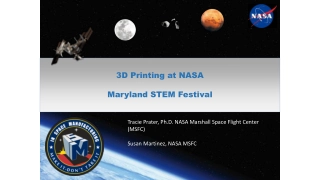

![❤Book⚡[PDF]✔ Doing the Impossible: George E. Mueller and the Management of NASA’](/thumb/21684/book-pdf-doing-the-impossible-george-e-mueller-and-the-management-of-nasa.jpg)


